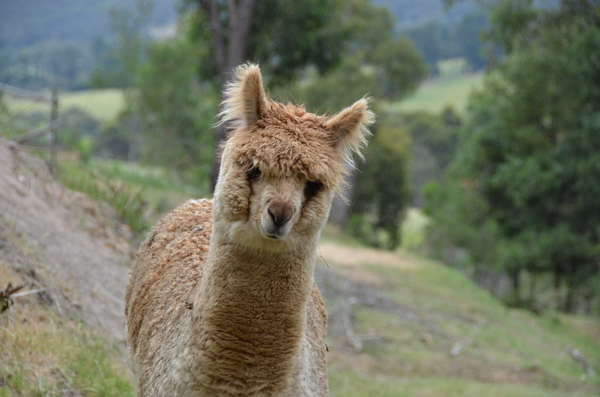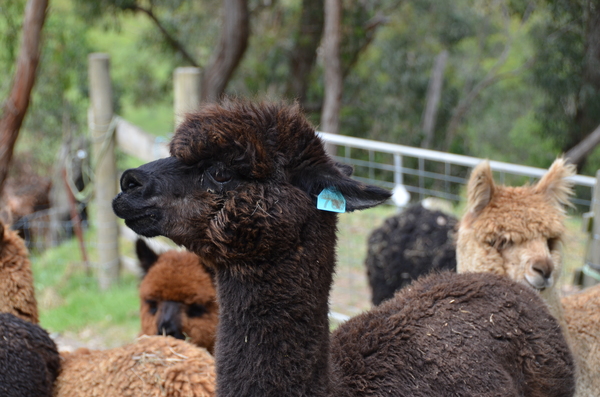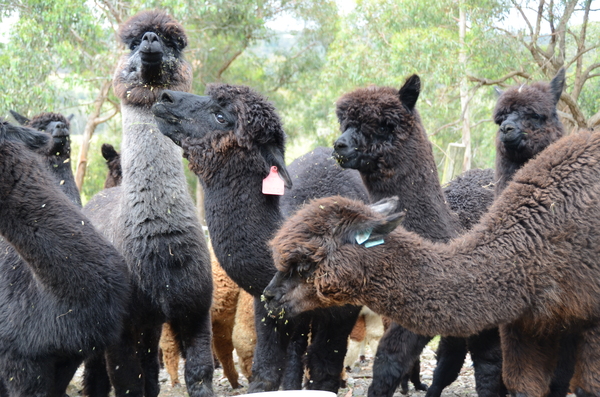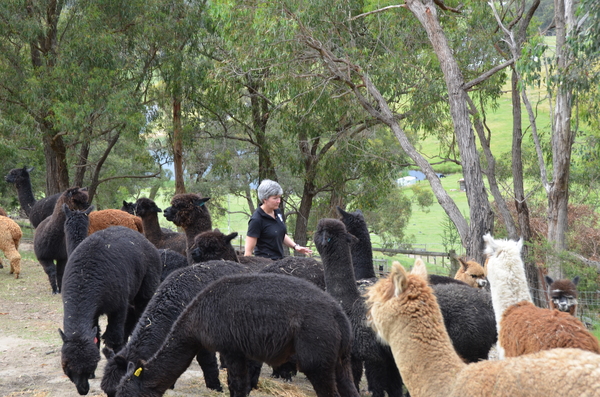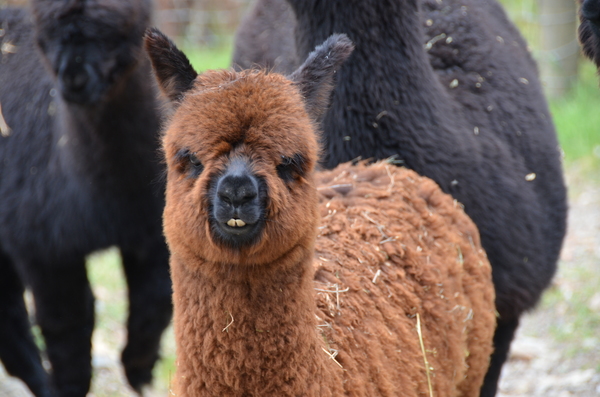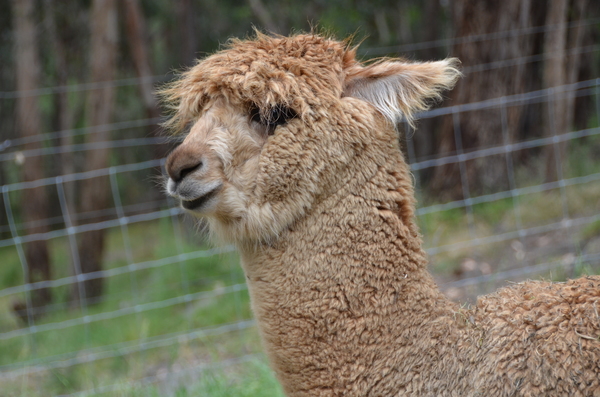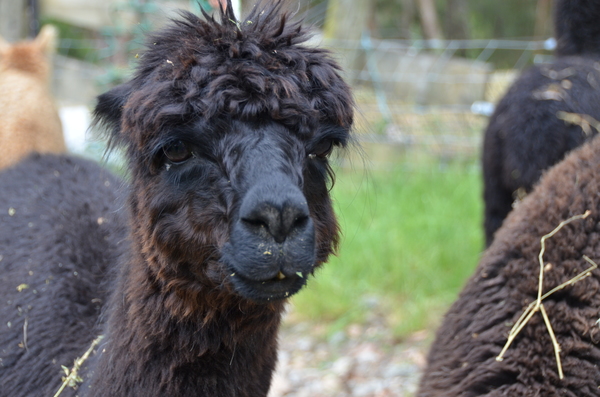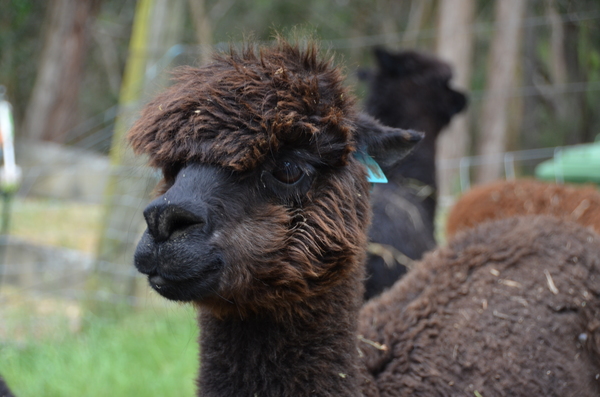“I really was a horse person who ended up with alpacas.”
Alpacas have been a part of life for Gwyn Morgan for more than 25 years. The Noble Park woman spoke to CASEY NEILL about her herd at Upper Beaconsfield.
Australia’s alpaca breeders got off to a slow start thanks to some low-quality stock from South America.
Breeders like Upper Beaconsfield-based Gwyn Morgan are helping to turn the tide.
Her family has been in alpacas for more than 25 years.
Gwyn’s mum and partner moved from Canberra to a property about 30 kilometres from the nation’s capital in the 1980s.
“They were going to breed horses,” she said.
That plan fell apart, but they still wanted to do something with the land.
The water supply was no good for grapes. Gwyn’s mum quickly rejected the suggestion of breeding ostriches.
Alpacas were just starting to take off in Australia.
“Alpacas started coming into Australia in the late ‘80s and early ‘90s, mostly from New Zealand,” Gwyn said.
“Some were coming from Chile and Peru.”
Their big eyes and eyelashes were hard to resist.
They process food more efficiently than sheep and their soft feet don’t do as much damage to the land.
Gwyn’s family imported two alpacas from New Zealand and two from Peru to start their herd.
The Peruvian alpacas were held in quarantine so long that “by the time we got them they had babies and they were pregnant again”.
Gwyn said that at that time, the South Americans took advantage of the Australian trailblazers and sent poorer quality animals.
“We didn’t know what we were looking for,” she said.
“It’s taken some time to get the quality up in Australia.”
Gwyn moved to Victoria in 2001 and set up her own herd, Pacarina Alpacas.
“About eight years ago mum moved off the stud and the herd came down here,” she said.
“I really was a horse person who ended up with alpacas.”
She’s farmed a scenic property in Upper Beaconsfield for the past six years.
“Before that I just kept a few in town, in Keysborough,” she said.
It was close to home in Noble Park, but then friends wanted to move to Upper Beaconsfield.
The only property they liked had land attached, so they asked Gwyn if she’d tend to it.
“We see each other more often now,” she said.
“They like having the animals here.
“There’s something to keep their grass down.”
And Gwyn has someone to keep an eye on the herd in the winter.
“I usually come out on weekends during winter,” she said.
“They’re such an easy-care animal.”
She has 41 alpacas altogether, 30 females and 11 males.
“Some of the boys have got to go,” she said.
Those that aren’t suitable for breeding will likely end up as pets.
Gwyn said they were becoming more popular because they were cute and easy to care for.
“You can have a couple on a five-acre block,” she said.
“You don’t need a lot of experience with livestock.
“If you can keep a dog or a cat you can keep an alpaca.”
They prefer to have another alpaca alongside them, “but they cope” with being paired with another animal.
Alpacas form strong bonds with the animals they live with and will go to great lengths to protect them.
“They chase dogs,” Gwyn said.
“They will actually kill a fox.”
Alpacas make a sound “like a seagull” to raise the alarm when danger approaches.
Gwyn recalled one instance where an alpaca bonded so closely with a sheep herd that it wouldn’t let the farm dogs muster them.
“They know what their duty is,” she said.
Aside from becoming pets, offspring not suitable for breeding can end up on plates.
“You can actually eat alpaca meat in Melbourne,” Gwyn said.
She said that alongside stud stock and wool, meat and hide was the “third leg” of the alpaca industry.
They were used as Australians generally use sheep in their native South America, though their numbers took a hit when the Spanish moved in and slaughtered the alpacas to make room for conventional sheep.
Gwyn said alpacas had nicer fleece than sheep. There’s no lanolin so it does not have the greasy feel of sheep’s wool.
She was preparing for her herd’s annual shearing on 26 November.
“It’s back-breaking work,” she said.
“It’s a fairly labour-intensive job.
“You can do it with two people but you wouldn’t want to.”
She was expecting eight people to join in the task, including a specialty alpaca shearer.
“Most sheep shearers will do it at a stretch,” she said.
“You don’t sheer them right down to the skin like you do sheep.”
This provides them with some protection from the sun.
Gwyn’s brood has mostly blue-black colouring. She’s working on breeding some of the darker animals with lighter-fleeced alpacas to produce some mid-tones.
She said the lighter colours were a higher-quality fleece.
“I don’t have a grey but I’ve got everything else in between,” she said.
“They tend to hang out with their own colours.
“That’s an evolutionary thing.”
It helps them to avoid standing out.
Males become ready for breeding when they reach between 18 months and three years of age.
The girls come of age at 12 months old.
“They don’t come on heat,” she said.
“They actually don’t ovulate until after they’ve mated.”
Alpacas can breed year-round.
“They mate sitting down,” Gwyn said.
“He’ll ask her to sit.
“If she’s receptive she’ll sit down and he’ll hop on top of her.
“If she’s not receptive she’ll spit.”
The “spit” is not saliva but partially-digested food.
“You always wear old clothes during breeding season,” Gwyn said.
Alpaca pregnancies last 11 months. It’s a tense wait to find out if the breeding match-up was successful, but Gwyn enjoys the challenge.
As she spoke, three female alpacas aged 18, 16 and 14 years gathered together and checked on the food situation.
“Generally speaking, but not always, it’s the older girls that are in charge,” she said.
Magellan moved around in the background. He was named after an explorer.
His grandmother was one of the first alpacas Gwyn received from her mum.
“When he was young he would wander off and explore everything,” she said.
“They tend not to challenge fences, but there’s always going to be one who’ll try every fence.”
The odd alpaca will kick to protect itself but it’s rare, as is spitting and biting.
They have a very flexible top lip to help them find and pick up small pieces of food.
Like sheep, they have a soft palate in the top of their mouth rather than teeth.
Their necks have strong muscles and 18 “cutlets”.
They’ll wade into the dam in hot weather and lay down, though they won’t swim.
They have a communal dung pile that produces great fertiliser and helps to keep them parasite-free.
Alpacas are fascinating.
“They’re different and they draw you in,” Gwyn said.
“They have different personalities.”
She said alpacas were a niche but growing market in Australia.
“Being in it from the beginning, you can see how it’s evolved,” she said.
“Eventually Australia would like to have a commercial wool industry.
“It would be nice to see people make a good living with it like they do sheep.”

